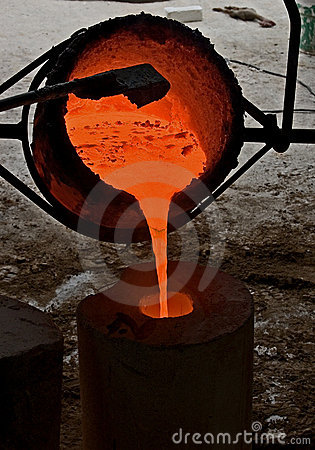Understanding the energy consumption in all phases of plant operation lets you identify the areas where change can have the biggest impact on efficiency. There are several plant areas to consider, but the biggest consumers of power are the first areas to address. Making small changes in specific areas of the plant will be less disruptive while making the improvements. But it may make sense to implement several changes at once in related areas to get the most benefit from your efforts. 
Plants following an efficiency improvement plan often start with the melting area since it is a huge consumer of power over time. Implementing changes to better control input power and cycle time can reduce the overall power consumption.
Traditional charging time requires a crane, one or more magnets and an operator. How quick this process is depends on the operator. Automating the melt deck leads to a more consistent charge with quicker charge cycles. To start, charge make-up systems allow the crane operator to continuously load the system while the charge operator can meter material as needed to make up the proper charge. Alloy addition systems also allow faster and more accurate material makeup, and can be integrated directly into the furnace charging unit. The material from both the charge make-up system and the alloy addition system are then combined in a vibratory charge feeder which provides a continuous charge that is fast and not reliant on human operators. Once tuned to the charging requirements of the furnace, the charging time becomes reduced as does the resource requirements.
Reducing the melting time saves on many plant resources. Traditional power input control using manual on/off switches again relies on an operator. Power use is inefficient because of the potential of overheating or cooling. Automated controls that track and manage the power throughout the melting cycle provide a more efficient use of the power.
Bundled steel allows for a higher density of material to be melted versus loose steel. Loading bundled steel is faster and the weight and volume is easier to monitor. Dry material is also important, as wet scrap can lead to explosive reactions in the furnace. Vibratory charge pre-heating systems dry any residual moisture off the scrap metal, as well as pre-heating the scrap metal to reduce melt time in the furnace.
An open furnace releases a lot of energy into the environment and results in more fluctuations in furnace temperature. Using a closed capture hood contains the heat and keeps the temperature more consistent.
Reducing de-slagging time starts with using a clean charge. Machines, such as General Kinematics DUCTA-SPRUE® rotary sprue cleaner, remove remaining core and molding sand from runners and sprue prior to returning the material to the charge yard. For more efficient slag removal from the furnace, a back-tilting mechanism is quicker than other manual approaches. Once that slag is removed, dry slag cooling conveyors and vibratory quenching conveyors can quickly cool the material into a form that can be reused and recycled in other material applications.
These are just a few areas in which a steel foundry can be made more efficient. With an improvement plan in place, over time a plant will have less waste, use less power and improve its operations.







